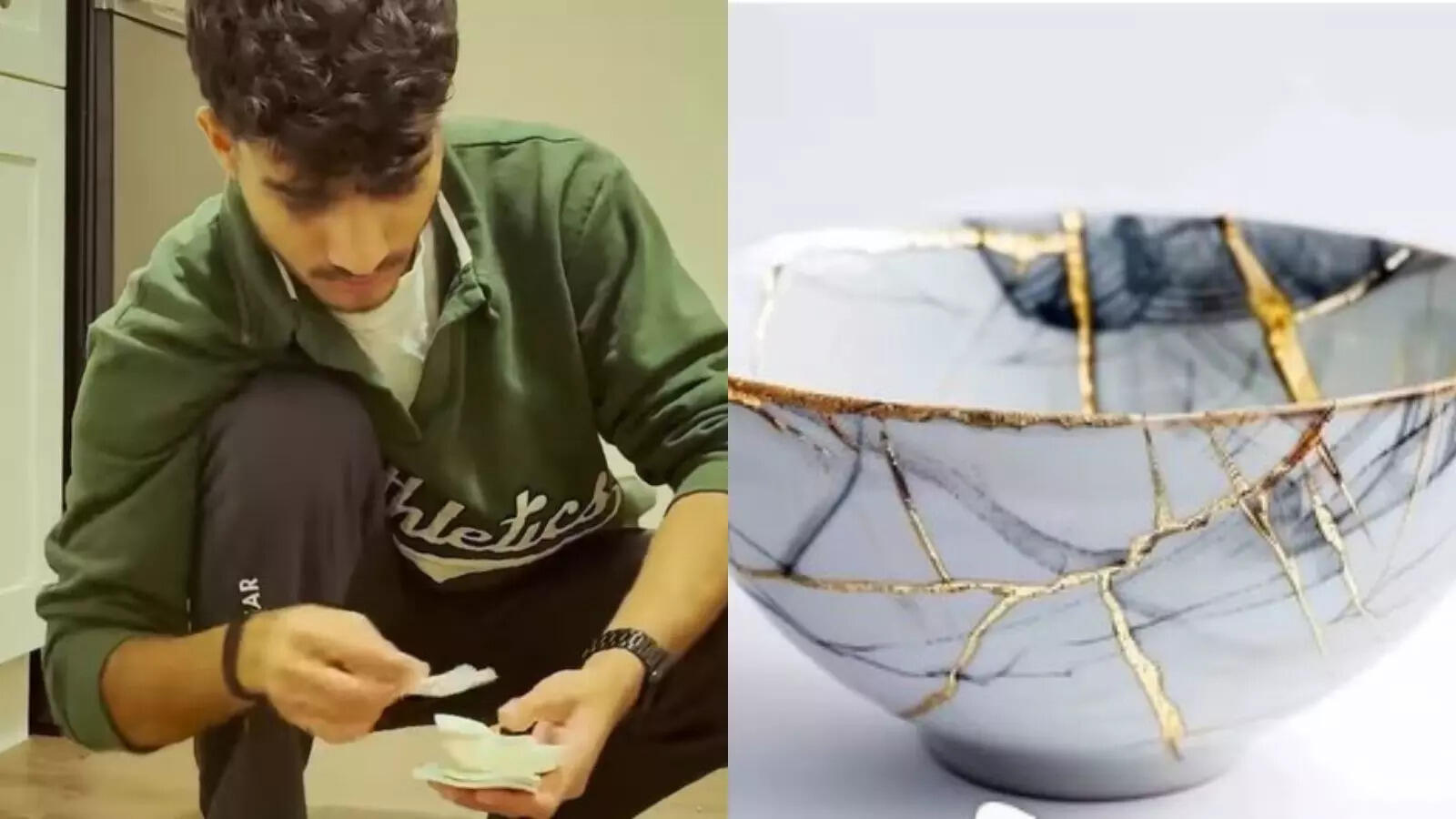What Is Kintsugi in Japan? The Beautiful Art of Healing Broken Things - Watch
Breaking a plate or cup at home often feels like a disaster: the sharp sound, the immediate panic, and the inevitable moment your mother rushes in with that familiar mix of disbelief and disappointment. What follows is usually a quick scolding about being “too careless,” no matter how many times you insist it was just an accident. But in Japan, breaking something is seen through a completely different lens, one that turns damage into beauty and imperfection into art.
Recently, a digital creator shared a heartwarming Instagram video introducing the Japanese concept of Kintsugi , which literally translates to “golden journey.” In the video, he said, “If you break crockery, your mom will probably beat you. But in Japan, it is different. If a child breaks a valuable piece of pottery, their parents do not get mad.” Instead of discarding the broken piece, Japanese families carefully collect the shattered fragments and repair them not with ordinary glue, but with lacquer mixed with gold or silver powder.
The creator explained that this process intentionally highlights the cracks instead of hiding them. “So that the cracks get more highlighted and become even more beautiful and valuable than before,” he shared. This simple act transforms a broken cup into something one-of-a-kind, a work of art that tells a story of endurance, healing, and transformation.
Kintsugi, beyond being a traditional craft, carries a deeply spiritual meaning. It teaches that when something breaks and is repaired, it gains new strength and beauty because of its scars not despite them. The same philosophy applies to life. As the creator concluded, “When life breaks you and leaves scars behind, do not hide them; it is a part of your character. Embrace them.”
The video quickly resonated with people across the internet, striking an emotional chord. One user wrote, “I got goosebumps.” Another commented, “How beautiful is the thought behind this whole process.” A third person added, “When you realise it’s not about crockery,” perfectly capturing the deeper message of resilience and self-acceptance.
One comment stood out among the rest for its poetic touch: “Mere ghar me kuch toota hai to mummy kehti hai, tootna acha shagun hai. Mere liye wahi Kintsugi hai.” (In my house, whenever something breaks, my mom says it’s a good omen. For me, that’s what Kintsugi truly means.)
What started as a simple explanation of a Japanese art form became a moving life lesson about healing, acceptance, and finding beauty in what’s broken. Kintsugi reminds us that every scar, whether on pottery or within ourselves, tells a story of strength, survival, and grace.

Recently, a digital creator shared a heartwarming Instagram video introducing the Japanese concept of Kintsugi , which literally translates to “golden journey.” In the video, he said, “If you break crockery, your mom will probably beat you. But in Japan, it is different. If a child breaks a valuable piece of pottery, their parents do not get mad.” Instead of discarding the broken piece, Japanese families carefully collect the shattered fragments and repair them not with ordinary glue, but with lacquer mixed with gold or silver powder.
The creator explained that this process intentionally highlights the cracks instead of hiding them. “So that the cracks get more highlighted and become even more beautiful and valuable than before,” he shared. This simple act transforms a broken cup into something one-of-a-kind, a work of art that tells a story of endurance, healing, and transformation.
Kintsugi, beyond being a traditional craft, carries a deeply spiritual meaning. It teaches that when something breaks and is repaired, it gains new strength and beauty because of its scars not despite them. The same philosophy applies to life. As the creator concluded, “When life breaks you and leaves scars behind, do not hide them; it is a part of your character. Embrace them.”
The video quickly resonated with people across the internet, striking an emotional chord. One user wrote, “I got goosebumps.” Another commented, “How beautiful is the thought behind this whole process.” A third person added, “When you realise it’s not about crockery,” perfectly capturing the deeper message of resilience and self-acceptance.
Watch The Video Here:
One comment stood out among the rest for its poetic touch: “Mere ghar me kuch toota hai to mummy kehti hai, tootna acha shagun hai. Mere liye wahi Kintsugi hai.” (In my house, whenever something breaks, my mom says it’s a good omen. For me, that’s what Kintsugi truly means.)
What started as a simple explanation of a Japanese art form became a moving life lesson about healing, acceptance, and finding beauty in what’s broken. Kintsugi reminds us that every scar, whether on pottery or within ourselves, tells a story of strength, survival, and grace.
Next Story